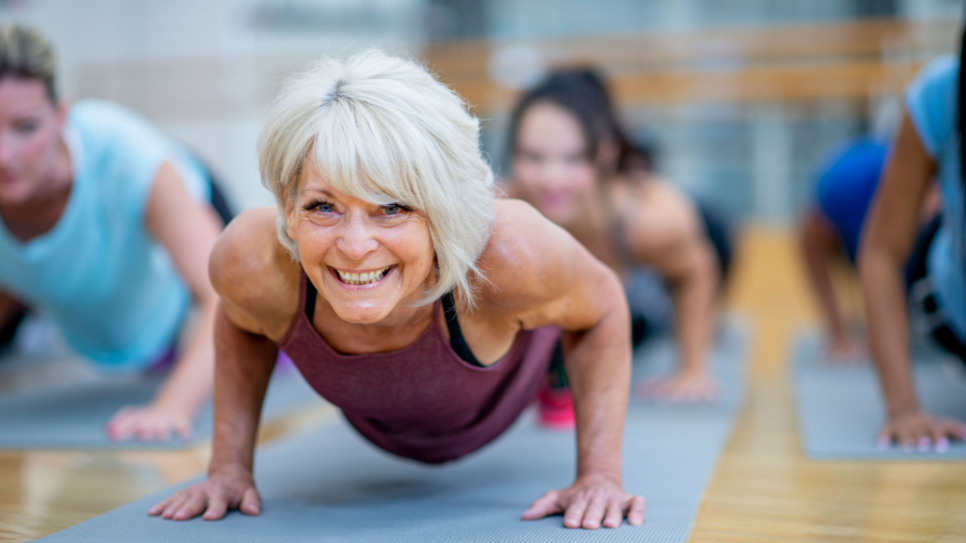
Embracing Yoga After 50
Share
A Gentle Path to Strength, Balance, and Peace
If you’ve ever thought, “Is it too late to start yoga now?” the answer is a wholehearted — no. Yoga is not reserved for the young and lithe; in fact, many people discover over 50 that a gentle, mindful yoga practice becomes one of their greatest allies in aging well.
Why Yoga Makes Sense at This Stage of Life
As we grow older, our bodies change: muscles may become stiffer, joints can lose range of motion, and balance can become more precarious. Yet yoga addresses all of these — and more — not through strenuous moves, but through slow, intentional movement, breath awareness, and mindful attention.

Here are benefits you’re especially likely to appreciate:
-
Improved flexibility and range of motion. Yoga offers gentle stretches and mild movements that gradually coax the body into greater mobility.
-
Increased strength and muscular tone. Many yoga postures use your own body weight to build strength in the core, arms, legs, and back.
-
Better balance and stability. Poses such as Tree Pose (Vrksasana) or variations of standing balances can help train your ankles, feet, and core to work more effectively — which helps reduce risk of falls.
-
Relief from aches, pains, and chronic conditions. Yoga can help ease back pain and stiffness; for many people, regular practice helps manage symptoms of arthritis or joint tension.
-
Stress reduction and mental calm. The breathing and mindfulness elements of yoga help lower stress hormones, quiet the mind, and cultivate a sense of inner peace.
-
Better sleep, energy and mood. Many people report more restful sleep, steadier energy through the day, and a more stable, upbeat mood.
These benefits align nicely with what many people over 50 want: more comfort, more ease of movement, less pain, and a stronger sense of well‑being.
Finding the Right Style for You
Not every kind of yoga is equally suited to someone starting or maintaining a practice in later years. Here are styles particularly well‑suited:
-
Restorative Yoga. Very gentle, supported poses held for longer periods, often with props (bolsters, straps, blocks) to allow full relaxation and deep release.
-
Yin Yoga. Also slow and meditative; this style focuses on longer holds, especially targeting connective tissues and joints.
-
Hatha Yoga (Gentle). A balanced form of yoga including posture, breath work, and relaxation — often accessible and adaptable for beginners.
-
Chair or Seated Yoga. For those with limited mobility, sitting or using a chair as a prop can open the door to movement without strain.
In many well‑led classes, teachers will offer modifications or alternative poses to accommodate limitations, injuries, or differences in balance. Props are your friends — blocks, bolsters, straps, even blankets can support your body, ensure safer alignment, and help you ease into each posture without force.

Tips to Begin Safely — and Stick With It
-
Start slow and listen to your body. It’s okay (and wise) to begin with a 15–30 minute class a few times a week, rather than diving into every day.
-
Use props and modifications. A block under your hand or a strap around your foot can make many poses accessible and safe.
-
Focus on quality, not depth. A mild version of a posture done mindfully is much better than forcing yourself into an advanced form.
-
Warm up gently. Simple joint rotations, gentle side bends, or seated stretches can help get your body ready.
-
Mind your breathing. Breath awareness is foundational in yoga. Let it guide your movements and transitions.
-
Be consistent. Small, regular practice (three times a week, say) often yields more benefit than occasional, intense sessions.
-
Consider a teacher experienced with older bodies. A teacher who understands aging, mobility issues, and modifications can make a big difference in your comfort and safety.
-
Combine yoga with other healthy habits. Walking, swimming, light strength training, and good nutrition will complement your practice well.
The Mind-Body Gift of Practice
Yoga is not just physical movement; it is a practice in awareness, presence, and compassion — toward your body, your mind, and your life. Over time, many practitioners report a shift: they become more attuned to how they feel, more patient with limits, more forgiving of imperfections, and more in tune with the body’s needs.
For someone over 50, that shift is especially valuable. It can foster greater acceptance of aging, inspire a mindset of growth rather than decline, and nurture resilience during life’s transitions.
Sample Gentle Sequence (Beginner-Friendly)
Here’s a simple mini‑routine to try (ideally under the guidance of a teacher at first):
-
Seated breath awareness (5 minutes)
-
Neck and shoulder rolls / gentle side stretches
-
Cat–Cow (on hands and knees or in chair)
-
Seated twist (or gentle standing twist)
-
Standing or seated forward fold (as tolerated)
-
Tree pose (modified, with support or wall)
-
Bridge pose (or supported bridge with a block/bolster)
-
Legs up wall (Viparita Karani) or gentle inversion with support
-
Savasana (deep relaxation) with props
Always take care, breathe, and never push into pain.
Final Thoughts
It’s never too late to begin yoga. For those over 50, it offers a unique blend of strength, flexibility, balance, and inner calm — tools that support graceful, empowered aging. Approach it with patience, curiosity, and kindness toward your body. Over time, you may find that yoga not only enhances how you move — but also how you experience each day.